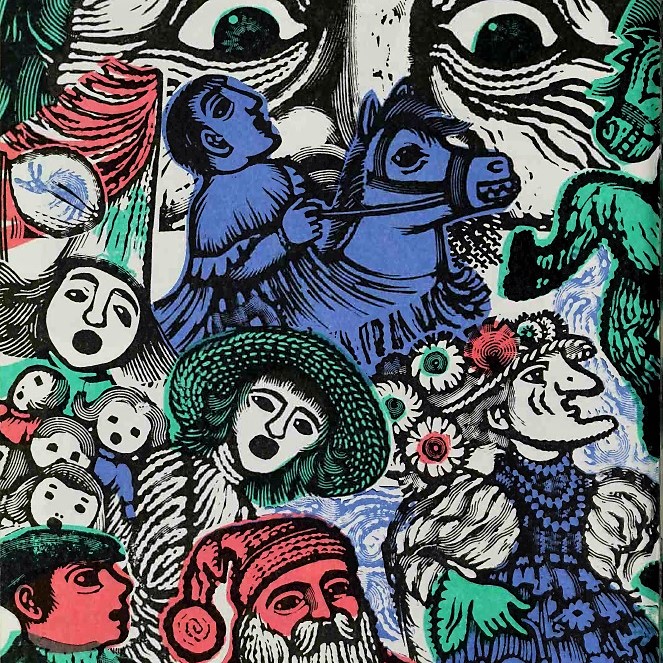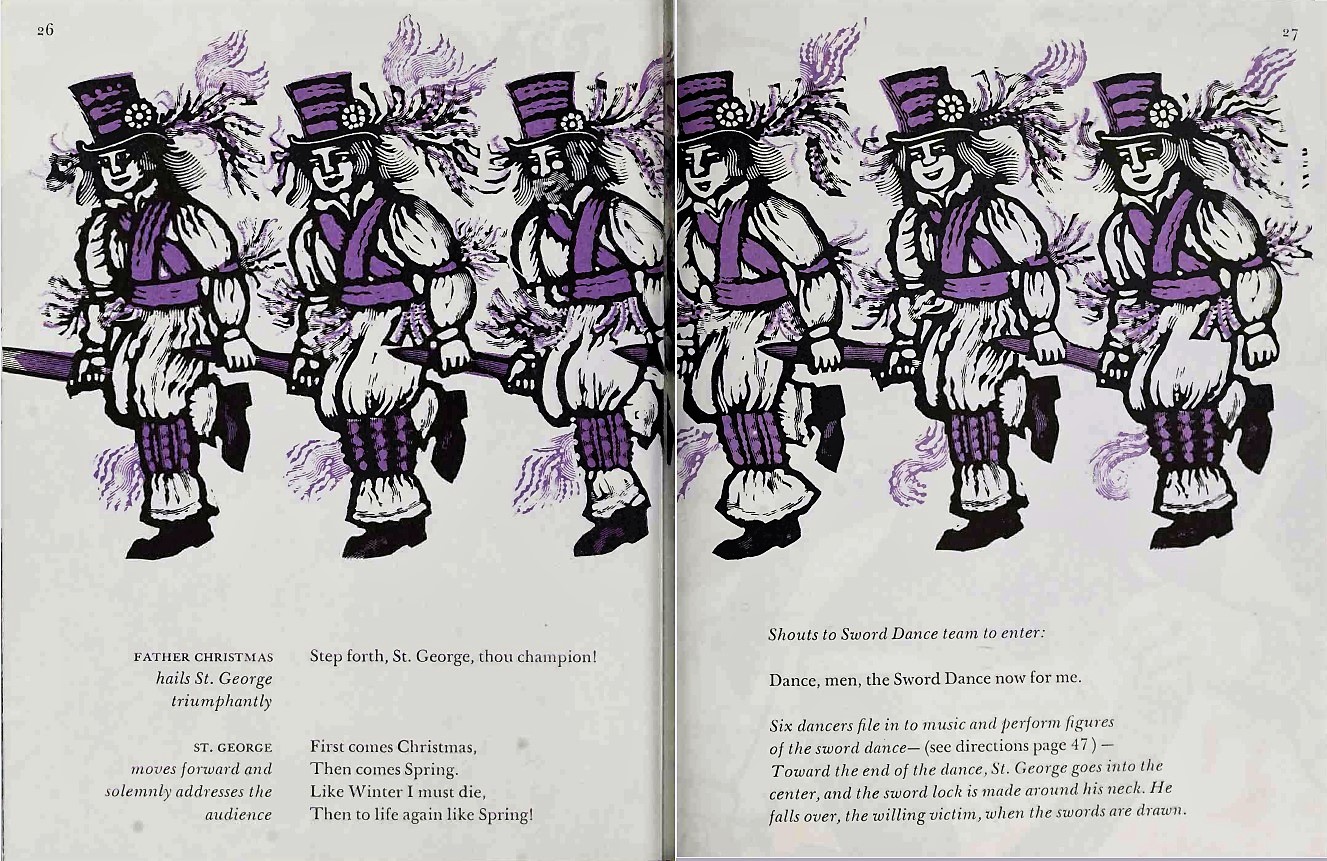Not long after I moved to Wiltshire, I was in the local pub for some Christmas drinks. The establishment had recently been tastefully redecorated to suit incomers like myself, all traces of its long history as a rough locals’ boozer expunged. Halfway through the evening, a gang of bizarrely dressed fellows crashed into the bar unannounced. One was dressed as Father Christmas, another as St George and they had a dragon in tow. There was also a doctor, a horse and a man in drag. What followed was bizarre, bawdy and unhinged. I was enthralled.
These men were there to perform a ‘mummers play,’ a reworking of the Saint George and the dragon legend with a grab bag of English folklore thrown in. There were elements of pantomime, Morris dancing and many other traditions lost in the mists of time. It was going to taken more than a little gentrification to stop these ancient performers.

John Longstaff writes in the introduction to his 1973 version of Saint George and the Dragon, that mumming was a ‘ceremonial way of bringing good luck to everyone, just as the Old Year turned and the New Year was about to begin. Even though the original purpose of primitive ritual is obscured.’
The history is hazy but mummers’ plays were the product of a time before the Victorian’s domesticated Christmas. Historian Tara Moore writes in her book Christmas, that in the pre-industrial age the holiday was celebrated by ‘out of doors carousing… Men participated in mumming by dressing up in disguises and walking from house to house to trade entertainment for beer or money.’
David Gentleman provides illustrations for this beautiful 1973 edition of the play. He’s a fine choice, not only a master of the woodcut, but trained by Edward Bawden and John Nash, and an acolyte of Eric Ravilious. Through them Gentleman has a connection to a particular seam of nostalgic Englishness that suits the mummers perfectly.
The text is provided by John Langstaff, an American early music specialist and Caldecott winning children’s writer. In 1957 Langstaff founded the ‘Christmas Revels’ a theatrical tradition that draws on English medieval traditions like the mummers and has been running across the United States ever since. According to his biographer and fellow Reveller, the Dark is Rising author Susan Cooper, Saint George and the Dragon formed the basis of every performance.
This version is drawn from several different sources and is packed with funny songs, slapstick and rituals designed to draw the crowd in. Langstaff writes, ‘No matter how amateurish the actors, this play always “catches” its audience, so long as the actors project the play’s boisterous broad humor and fun mixed with the solemn moments of mysterious magic.’
I’ve not seen the mummers since that strange night, and the whole thing does feel a little like a dream. But whenever I’m in a pub around Christmas, I’ve always got an ear to the door, hoping to hear the immortal words that introduce their performance. “Please to let the mummers act!”










That’s a brilliant edition! A grea commentary from you, too, And what a link to have Cooper in there! I see her point about St George – but I wonder if the link is further back and is about a (semi)divine life and death?
LikeLike
Thanks Nick. I couldn’t believe it when I found the Susan Cooper connection. Makes perfect sense that she’s a mummer!
LikeLike
I always love seeing the books you dig up and your thoughts about them. This reminds me of a book I had On Christmas Day in the Morning. It was just carols with lyrics and piano notation but had these great illustrations by Antony Groves-Raines of villagers engaged dancing around maypoles, wearing pig heads and other such folk celebrations.
LikeLike
Thanks Chris, might see if I can track that one down for next Christmas.
LikeLike